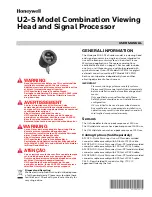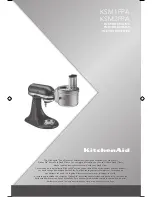
AUDYSSEY MultEQ XT ROOM ACOUSTICS CORRECTION
Sound reflecting from room boundaries can disturb the spatial illusion
of surround sound, and can also distort the tonal balance of the system.
Professional Acoustical Engineers often add wall treatments and even move
walls and relocate speakers to improve system performance, but for the average
Home Theatre, this is either too expensive or just not a practical solution.
Audyssey MultEQ XT, using multiple measurements from the actual
listening positions, and processing this information using very sophisticated
digital signal processing, is able to “precondition” the signal to effectively
make the walls disappear. This creates a ‘family size’ sweet spot where the
sound and spatial cues are very accurately reproduced.
MultEQ XT is designed to tame room acoustics without changing the sonic
character of your loudspeakers. While it will make the most of whatever
loudspeakers you have, it will not make poor speakers sound like good
ones!
Connect the Audyssey microphone jack into the front panel’s MP/MIC input
and the Audyssey Auto Calibration wizard will guide you through a simple
step-by-step configuration. Once setup and calibrated, the next greatest
improvement in performance is obtained by eliminating the acoustic
interference caused by room boundaries interacting with your speakers.
MEASUREMENT IS THE FIRST STEP
The sound at each listening position (up to 8 positions) is calibrated using
the same microphone used during the setup phase.
A special test tone is sent to each speaker and the data is memorized by
the T 187. The duration of calibration may take some time depending on
the number of speakers as well as the number of measuring points. After
all positions are measured, the DSP calculates the ideal system response for
your particular room and speaker setup.
If some inconsistencies or discrepancies are detected during the Audyssey
calibration, the process maybe interrupted or the problem is shown in the
particular setup window. A notice screen is correspondingly displayed.
After following and undertaking the displayed instructions, re-start the
Audyssey calibration again. When the measurements are finalized, Audyssey
calculates the ideal system response for your particular room and speaker
setup.
NOTE
The test tone emitted during measurement is loud. If you cannot
withstand the test tone level, it is advisable that you stay away from
the room or location where the speakers are being calibrated. Return to
the room or location after each calibration to change the microphone’s
position or to finalize the calibration.
NEXT A TARGET CURVE MUST BE CHOSEN
Because loudspeaker designers assume that their products will be used in
typical domestic rooms, they are ‘voiced’ to work in this environment. It is
assumed that the room will add some bass reinforcement and will absorb
some treble energy. Thus if we effectively ‘remove the walls with room
correction, and set the speakers for flat response, you may find this sounds
too bright in the treble and too weak in the bass region.
NAD engineers have done extensive research in this area of room acoustics,
and along with Audyssey engineers developed what we believe is the ideal
‘in room’ response curve. We include this NAD EQ, along with an Audyssey
developed EQ as the two best choices. The response curves shown below
typify NAD EQ room correction process.
Room Response measured by Audyssey microphone
Inverse Correction Filter calculated by NAD T 187
Corrected Room Response
Flat EQ is a third option, but not one that we recommend for listening
(it is useful for verifying system performance when using external
instrumentation).
OPERATION
USING THE T 187 – SETUP MENU
19
ENGLISH
FR
ANÇ
AIS
ESP
AÑOL
IT
ALIANO
DEUT
SCH
NEDERL
ANDS
SVENSK
A
Р
У
С
СКИЙ
















































